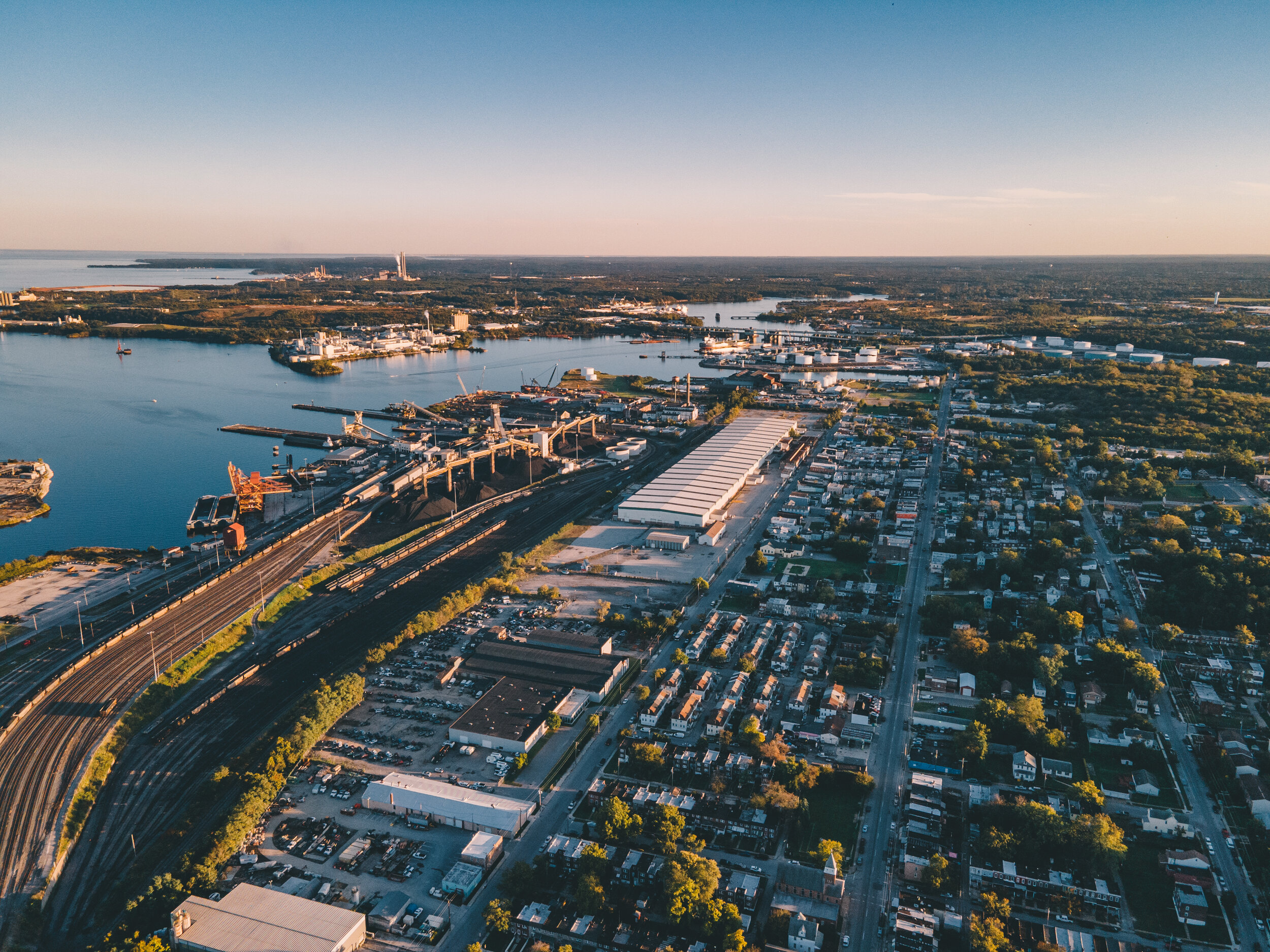
It is clear that there is little separation between industry and residential neighborhoods in Curtis Bay. In this photo we can see train yards and a coal storage facility in the foreground, with oil refineries and a trash incinerator in the background. This has led to a number of environmental health issues in the community.

Curtis Avenue is the street that separates industry from residence in Curtis Bay; On one side neighborhoods, the other side train-yards, coal, and other polluting industry.
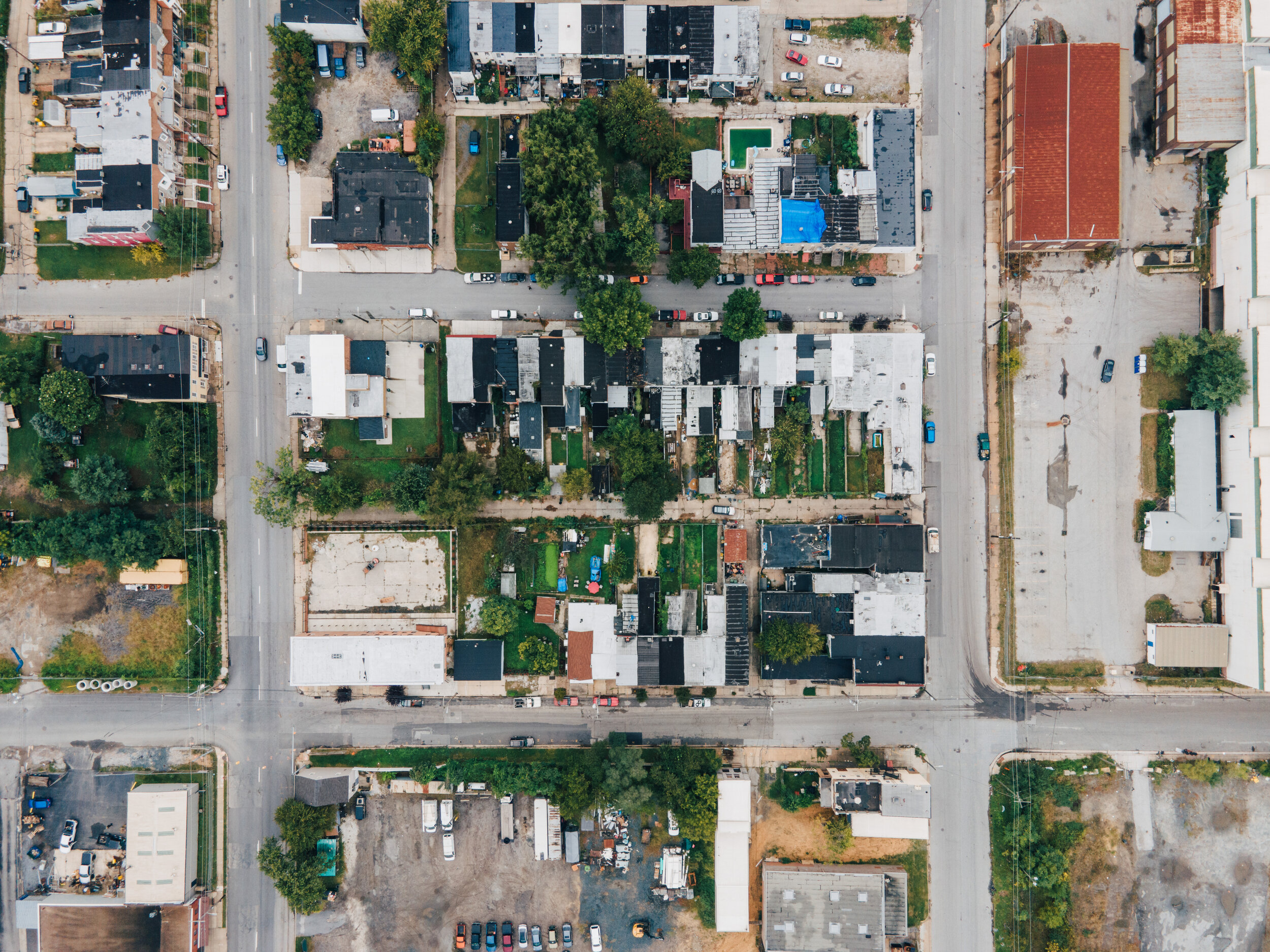

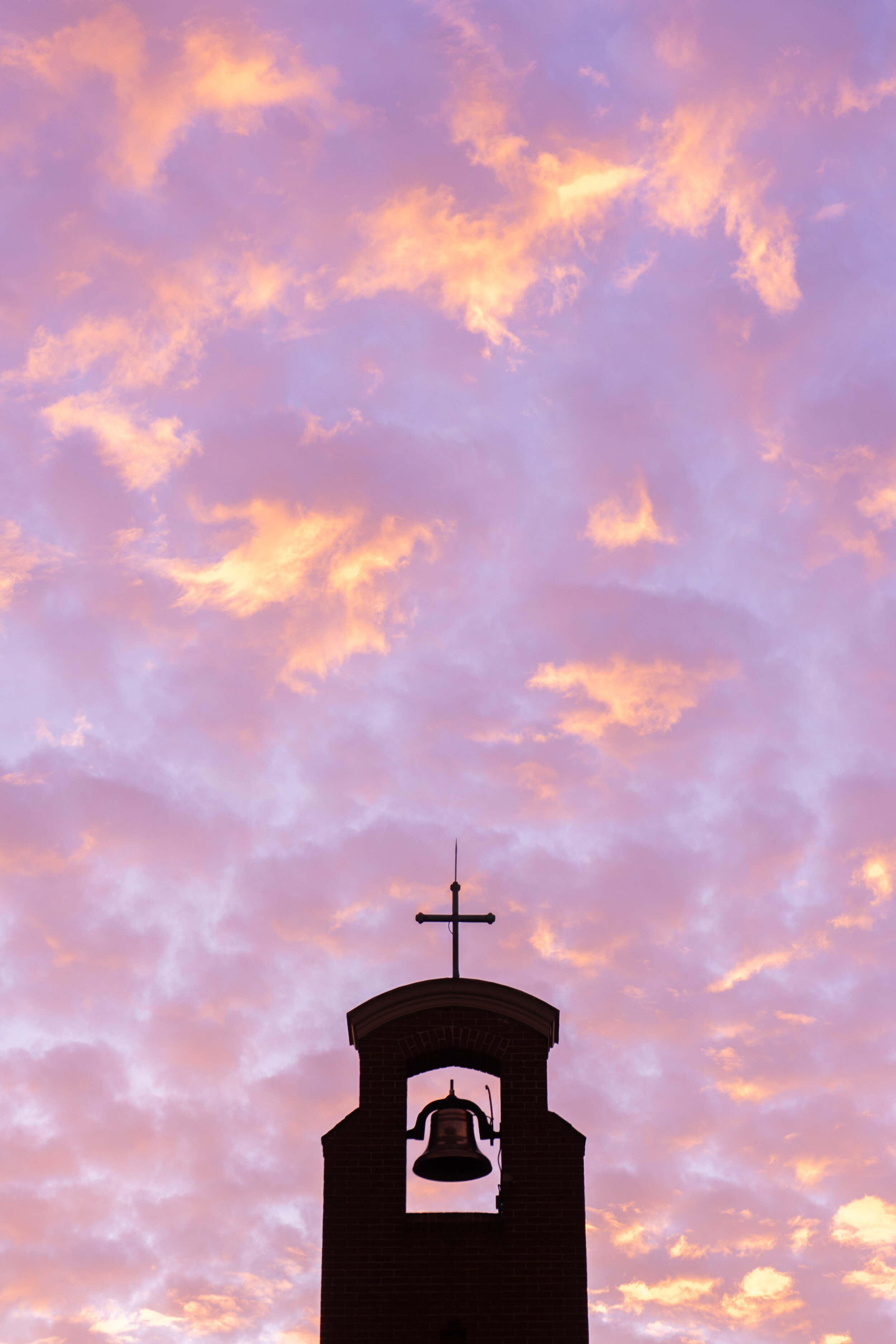
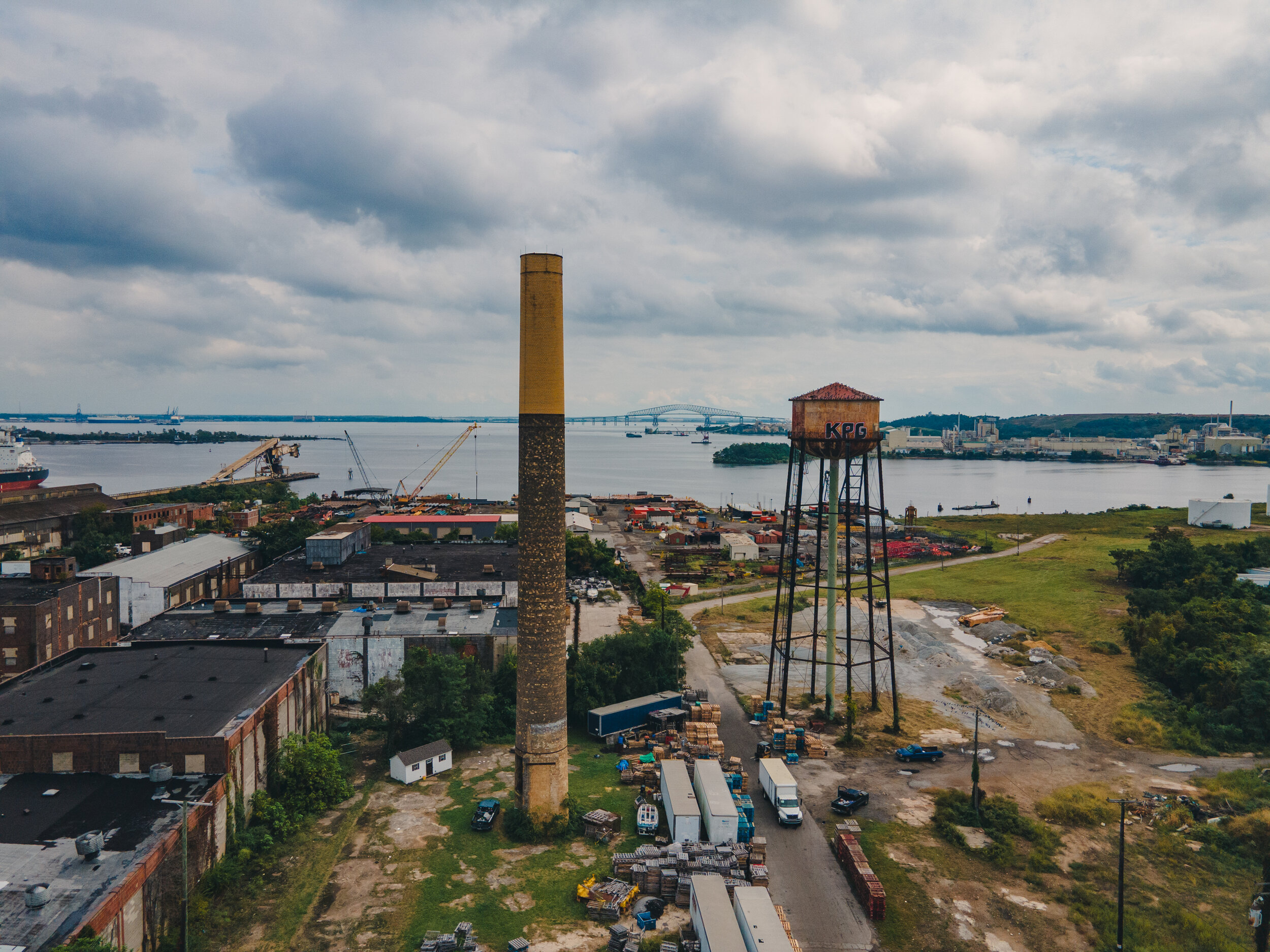
The history of decline in South Baltimore starts in the 1950s, when the population of Baltimore was at its peak. In a planning report by the Baltimore Regional Planning Council, it was projected that the population of Baltimore would steadily increase from 950,000 to 1.2 million in three decades. However, during this same period, Baltimore witnessed a significant transformation as over 100,000 manufacturing jobs were lost and the federally subsidized suburbanization of nearby areas led to even more emigration (Boone, Fragkias, Buckley, & Grove, 2014). Today, the population of Baltimore City continues to decline, currently at 602,496 (United States Census Bureau).
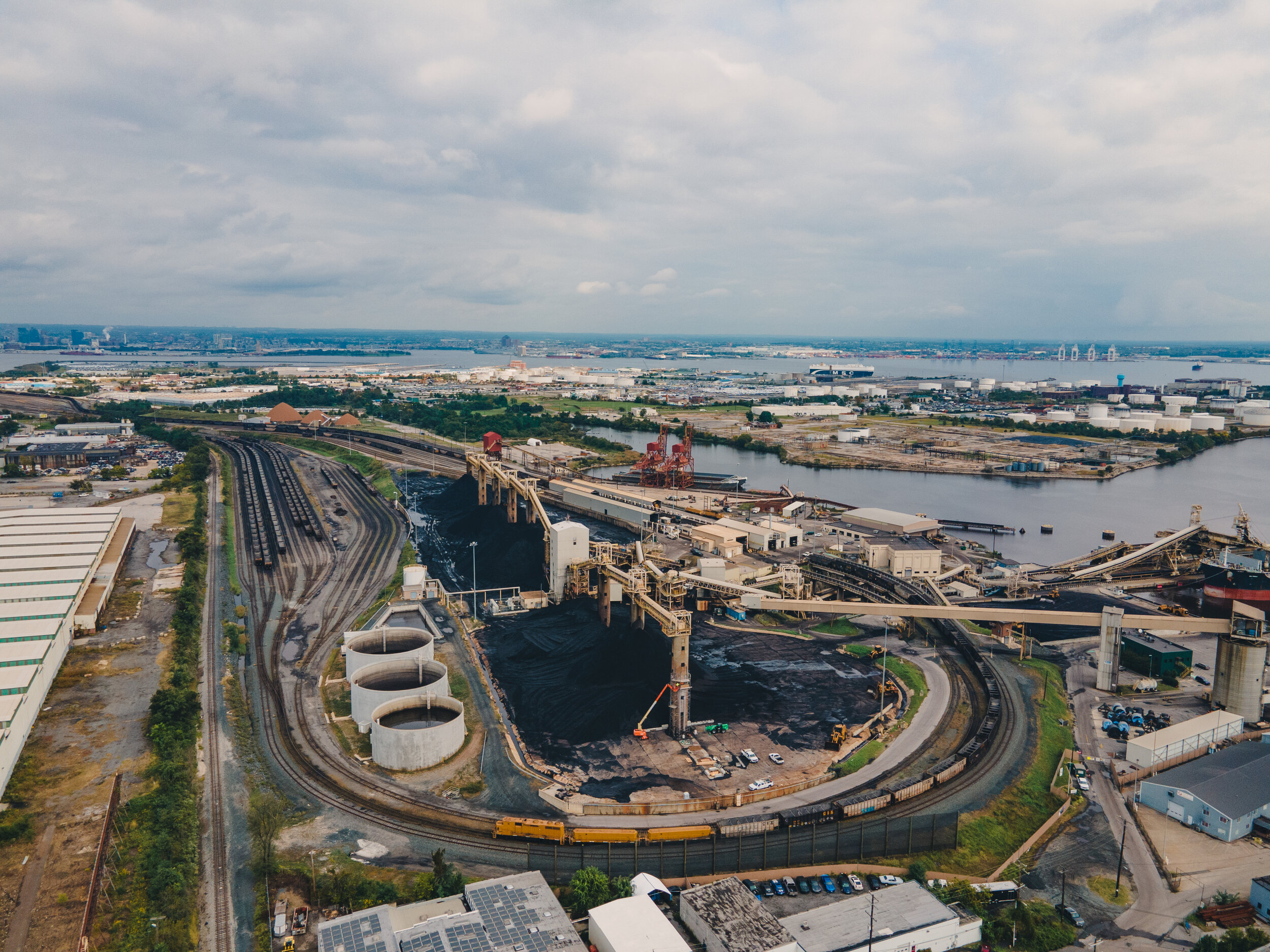
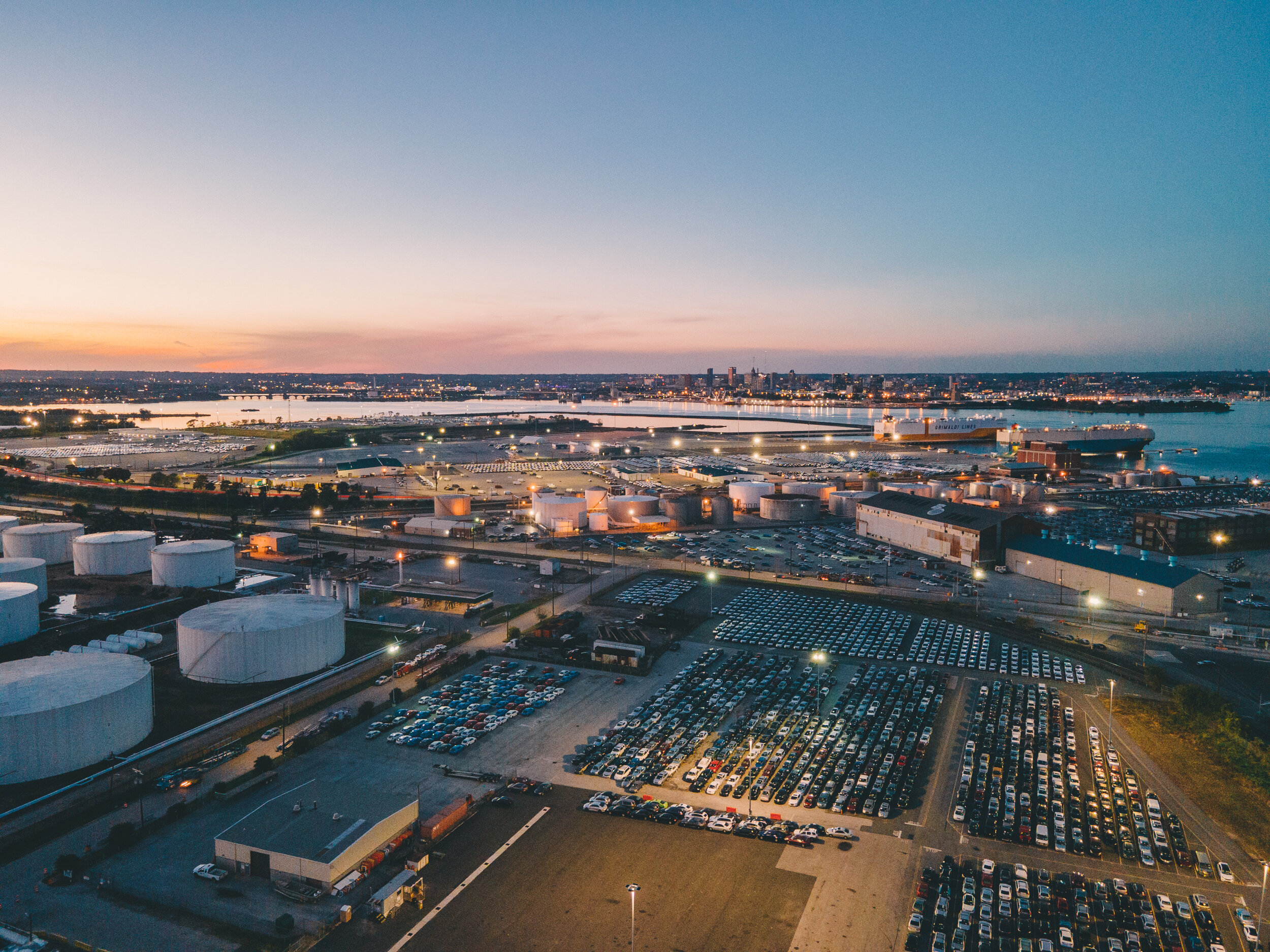



There is overwhelming evidence in the field of Environmental Justice that communities that have higher percentages of minorities have more pollutants, yet South Baltimore seems to be an exception to this rule, with majority-white communities being the most likely to have higher levels of pollutants. The reason for this, however, is rooted in discrimination towards people of color; more specifically, the answer lies in redlining. In the first few decades of the twentieth century, living close to one’s job was a privilege most afforded to white residents of Baltimore. Baltimore was the first city in America to pass a local ordinance limiting where blacks could live (Boone, 2014), though this was later abolished through a supreme court ruling in 1917. However, the practice of housing discrimination continued with homeowners’ associations in the city of Baltimore working together to keep minorities out through restrictive selling covenants, discriminatory mortgage practices, and redlining. Thus, once the industry left and these communities became subject to poverty, they were left living in toxic neighborhoods while Black communities were living elsewhere in the city due to the unjust discriminatory practices against them.
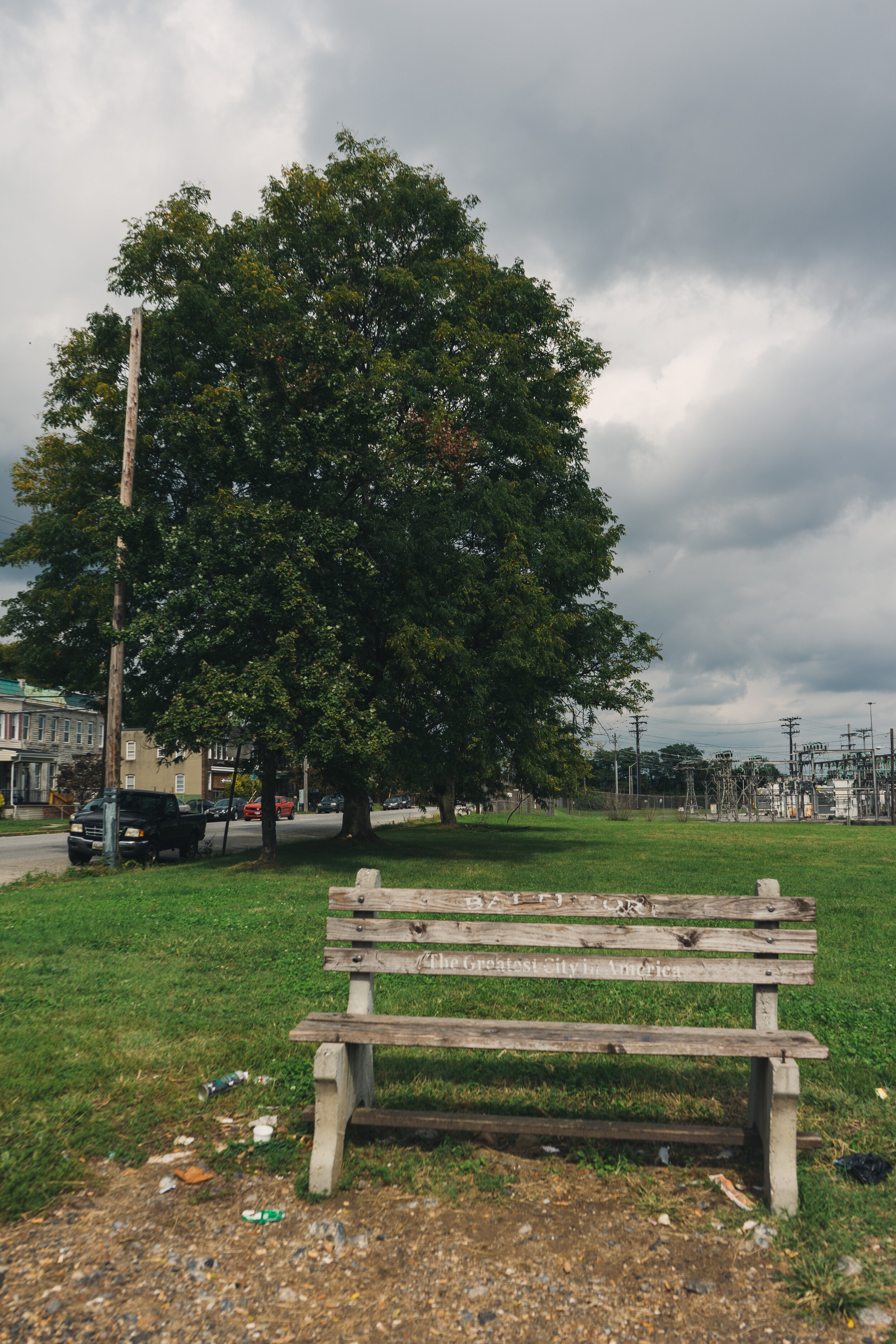

Masonville Cove, originally a suburban community, was abandoned due to job loss in the early 60s and replaced by industry. Following further economic decline, Masonville Cove is made a placement site for dredge material. In 2007, cleanup and restoration of the site began and in 2013 it was designated as the first Urban Wildlife Refuge Partnership in America.

Ran by the Baltimore Compost Collective, the Filbert St. Gardens is a community project that was birthed out of an abandoned parking lot. Today it serves as a community sanctuary, where organic food is grown, local youth are employed, and educational workshops are offered to local residents.

containing a variety of crops, livestock, beehives, and a small composting facility, the Filbert St. Gardens serve as a holistic community healing center where families can get organic produce in a food desert, gain access to an urban green space, and enjoy educational workshops in sustainability and the importance of composting.
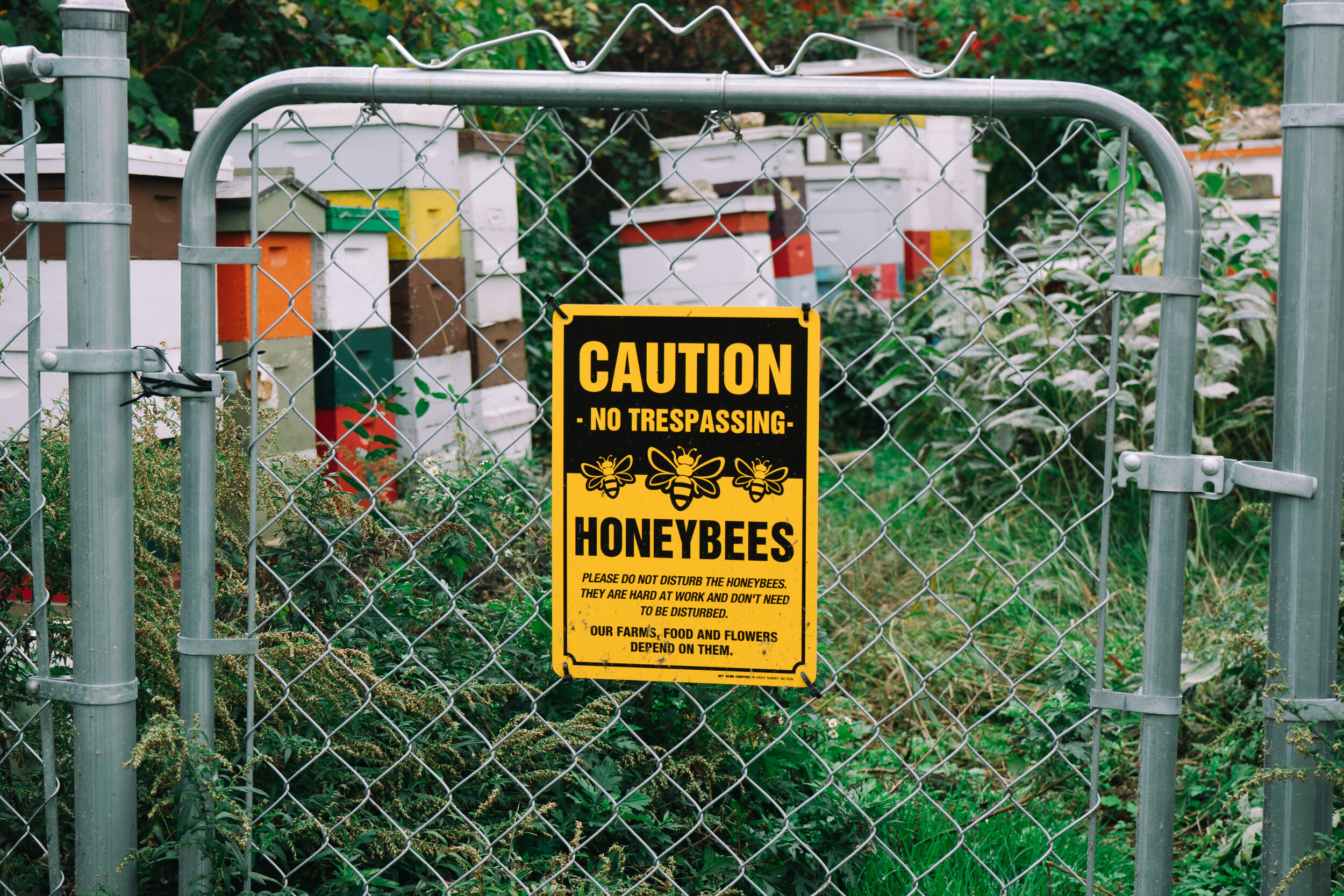
In a joint partnership with The Well, a local nonprofit that aids local women and survivors of domestic abuse, the Filbert St. Gardens provide bee hives with which women from The Well use to make various skincare and hygienic products as part of Hon’s Honey, a program by The Well. These products provide a source of income and independence.
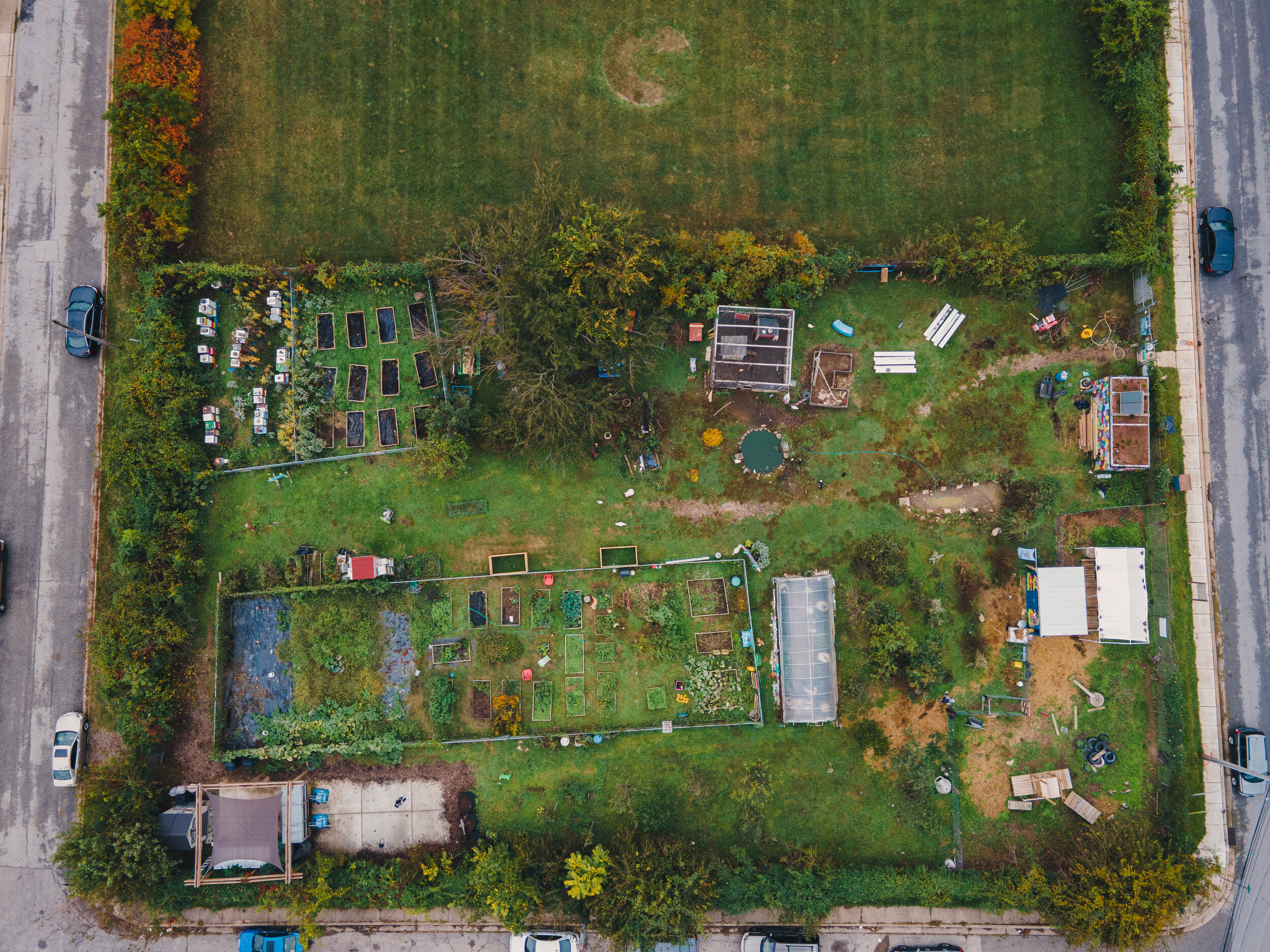
The trauma associated with the environmental health inequities in South Baltimore is not without healing. In a community that has been underserved by local, state, and federal governments through lack of funding, state-sanctioned pollution, and discriminatory housing, residents have come together to support one another through grass roots organizing to empower the most vulnerable members of the community and lobby for more political representation, taking matters into their own hands.



















It is clear that there is little separation between industry and residential neighborhoods in Curtis Bay. In this photo we can see train yards and a coal storage facility in the foreground, with oil refineries and a trash incinerator in the background. This has led to a number of environmental health issues in the community.
Curtis Avenue is the street that separates industry from residence in Curtis Bay; On one side neighborhoods, the other side train-yards, coal, and other polluting industry.
The history of decline in South Baltimore starts in the 1950s, when the population of Baltimore was at its peak. In a planning report by the Baltimore Regional Planning Council, it was projected that the population of Baltimore would steadily increase from 950,000 to 1.2 million in three decades. However, during this same period, Baltimore witnessed a significant transformation as over 100,000 manufacturing jobs were lost and the federally subsidized suburbanization of nearby areas led to even more emigration (Boone, Fragkias, Buckley, & Grove, 2014). Today, the population of Baltimore City continues to decline, currently at 602,496 (United States Census Bureau).
There is overwhelming evidence in the field of Environmental Justice that communities that have higher percentages of minorities have more pollutants, yet South Baltimore seems to be an exception to this rule, with majority-white communities being the most likely to have higher levels of pollutants. The reason for this, however, is rooted in discrimination towards people of color; more specifically, the answer lies in redlining. In the first few decades of the twentieth century, living close to one’s job was a privilege most afforded to white residents of Baltimore. Baltimore was the first city in America to pass a local ordinance limiting where blacks could live (Boone, 2014), though this was later abolished through a supreme court ruling in 1917. However, the practice of housing discrimination continued with homeowners’ associations in the city of Baltimore working together to keep minorities out through restrictive selling covenants, discriminatory mortgage practices, and redlining. Thus, once the industry left and these communities became subject to poverty, they were left living in toxic neighborhoods while Black communities were living elsewhere in the city due to the unjust discriminatory practices against them.
Masonville Cove, originally a suburban community, was abandoned due to job loss in the early 60s and replaced by industry. Following further economic decline, Masonville Cove is made a placement site for dredge material. In 2007, cleanup and restoration of the site began and in 2013 it was designated as the first Urban Wildlife Refuge Partnership in America.
Ran by the Baltimore Compost Collective, the Filbert St. Gardens is a community project that was birthed out of an abandoned parking lot. Today it serves as a community sanctuary, where organic food is grown, local youth are employed, and educational workshops are offered to local residents.
containing a variety of crops, livestock, beehives, and a small composting facility, the Filbert St. Gardens serve as a holistic community healing center where families can get organic produce in a food desert, gain access to an urban green space, and enjoy educational workshops in sustainability and the importance of composting.
In a joint partnership with The Well, a local nonprofit that aids local women and survivors of domestic abuse, the Filbert St. Gardens provide bee hives with which women from The Well use to make various skincare and hygienic products as part of Hon’s Honey, a program by The Well. These products provide a source of income and independence.
The trauma associated with the environmental health inequities in South Baltimore is not without healing. In a community that has been underserved by local, state, and federal governments through lack of funding, state-sanctioned pollution, and discriminatory housing, residents have come together to support one another through grass roots organizing to empower the most vulnerable members of the community and lobby for more political representation, taking matters into their own hands.
